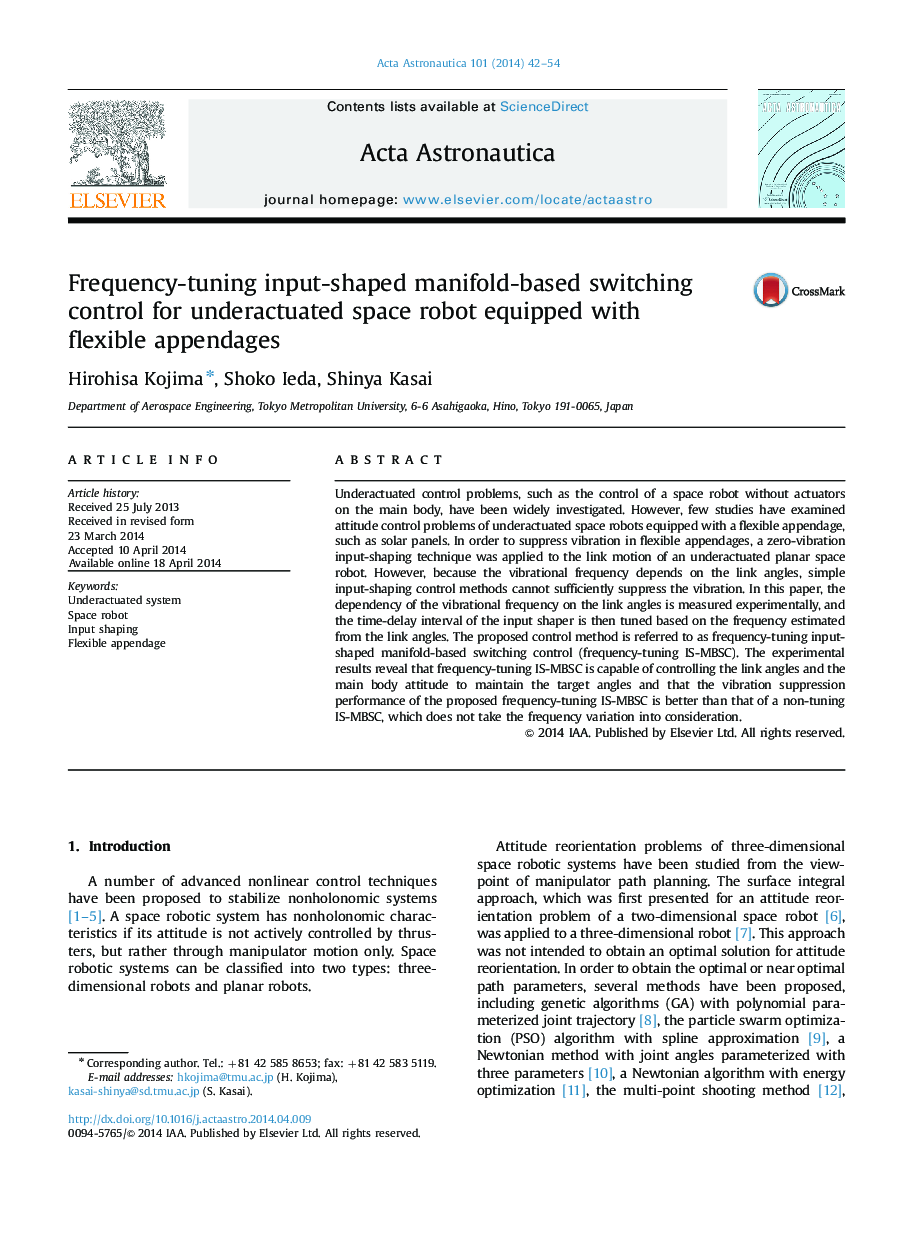| Article ID | Journal | Published Year | Pages | File Type |
|---|---|---|---|---|
| 1714625 | Acta Astronautica | 2014 | 13 Pages |
•Attitude control problem of an underactuated robot with flexible beam is considered.•Dependency of vibration frequency of the beam on link angles is formulated.•Frequency-tuning input-shaped manifold-based switching control is proposed.•Target attitude of the main body and target link angles are simultaneously achieved.•Vibration suppression performance is improved by tuning the delay-time of the shaper.
Underactuated control problems, such as the control of a space robot without actuators on the main body, have been widely investigated. However, few studies have examined attitude control problems of underactuated space robots equipped with a flexible appendage, such as solar panels. In order to suppress vibration in flexible appendages, a zero-vibration input-shaping technique was applied to the link motion of an underactuated planar space robot. However, because the vibrational frequency depends on the link angles, simple input-shaping control methods cannot sufficiently suppress the vibration. In this paper, the dependency of the vibrational frequency on the link angles is measured experimentally, and the time-delay interval of the input shaper is then tuned based on the frequency estimated from the link angles. The proposed control method is referred to as frequency-tuning input-shaped manifold-based switching control (frequency-tuning IS-MBSC). The experimental results reveal that frequency-tuning IS-MBSC is capable of controlling the link angles and the main body attitude to maintain the target angles and that the vibration suppression performance of the proposed frequency-tuning IS-MBSC is better than that of a non-tuning IS-MBSC, which does not take the frequency variation into consideration.
